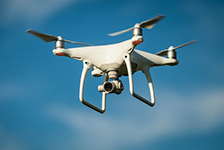 *Asked and Answered
*Asked and Answered
Asked – We have several members in our community that are failing to pay their monthly HOA dues and have run through several debt collection firms in an attempt to collect on these accounts. The firms we have used continuously promised us to collect the delinquency and that “the fees will be paid by the delinquent homeowner.” Well, in most of our cases, we ended up paying triple or quintuple the delinquent amount in legal fees and collection costs all to end up with nothing or a small portion of it. We have come to the point where we don’t see that “light at the end of the tunnel” and would like to know what really is the most efficient and effective way to collect delinquent assessments.
Answered – It is not uncommon to come across HOA boards that have a sour taste in their mouth left by their prior debt collection firm. This is mostly caused by firms that (1) guarantee and promise results (specifically, promises that they will get the job done and all costs will be reimbursed by the homeowner-debtor); (2) drive up their legal fees and costs; and (3) end up not being able to collect or recoup the delinquency from the debtor. This leaves the HOA to not only write off the bad debt, but to also incur costs that are exponentially higher than the original debt.
There are two (2) primary methods in which HOAs are able to collect on delinquent assessments: (a) judicially and (b) non-judicially. The former requires the involvement of the court system, consisting of a lawsuit that prays for a money judgment and/or judicial foreclosure (court ordered sale of the home). The latter is through non-judicial foreclosure (“NJF”) that does not require the court’s involvement.
Judicial Enforcement
Generally, getting the court involved increases the amount of time and money that an HOA must expend due to the added court fees, court procedures, attorney appearances, and so on and so forth. This is especially true if the homeowner decides to contest the lawsuit and file an answer, further dragging out the time and cost for resolution. Barring homeowner contest, judicial enforcement can be effective and beneficial in two (2) situations: (a) when the home is underwater (i.e., no equity), or (b) when there is senior foreclosure activity.
When the home is underwater, an HOA should not seek foreclosure because the chances of a buyer purchasing the property is slim to none, leaving the HOA to take title to the property. In this situation, a lawsuit is beneficial in that the HOA has the option to proceed with collecting on the money judgment through a variety of collection methods (e.g., bank levy, wage garnishment). This same benefit applies to the second scenario wherein the senior lender is in the process of conducting its own foreclosure sale. This is because if there is senior foreclosure activity and the HOA attempts to conduct its own sale prior to the senior’s, it is unlikely that anyone would be willing to buy the home subject to the mortgage, or even worse, to be foreclosed on by the senior.
The ability to opt to pursue a money judgment is indeed beneficial. However, boards must keep in mind that the added benefit does not come without its flaws:
- Increased legal expenses, costs and time;
- Subject to same NJF risks:
- Lack of equity;
- Senior foreclosure.
- Uncollectable money judgments
Above all, should judicial enforcement fail, the HOA will not only have to write off the debt and absorb the legal fees and collection costs, but will have to do it all over again should the homeowner-debtor continue to reside at the property and fail to pay assessments. This is something that HOAs do not have to worry about when proceeding with NJF.
Non-Judicial Enforcement (i.e., NJF)
NJF is similar to judicial enforcement with the exception of two (2) crucial differences:
- As to both judicial foreclosure and money judgment: It does not require court involvement and attorney appearances, saving the HOA a substantial amount of money and time; and
- As to money judgment: It secures not only the delinquent amount accrued up to the date of lien recordation, but all future delinquent assessments, costs, late fees and interests accrued thereafter.
In addition to the NJF advantages listed above, NJF generally resolves the delinquent matter before it ever reaches the foreclosure sale. This is because the homeowner realizes what is at stake: his/her home and increasing collection costs, fees and interest. The California Civil Code requires HOAs to perform the following steps, among other things, prior to the foreclosure sale:
- Pre-lien Letter: This informs the homeowner of the delinquency and risk of losing his/her home;
- Recordation of Delinquent Assessment Lien (“Lien”);
- Recordation & Service of Notice of Default (“NOD”); and
- Recordation & Service of Notice of Trustee’s Sale (“NOS”).
Nine out of ten times, the delinquent homeowner will reach out and pay off the delinquency before it reaches the NOD stage, providing a resolution timetable of approximately 60 – 75 days. This is because the Lien puts a “cloud” on title of the home, preventing the homeowner from obtaining loans, refinancing his/her mortgage, and/or transferring title to the home. In the rare instances that this does not occur, the HOA can simply proceed with the sale. With a shorter turnaround time and lower legal fees and costs, NJF can be advantageous for most HOAs to utilize for assessment collection.
 |
In most delinquent assessment matters, it is unlikely that the subject home will lack sufficient equity to recoup the HOA assessment debt, which makes NJF that much more appealing. However, as discussed, there are instances where NJF may not be a viable option. This is why it is of utmost importance that the HOA’s collection agent does its due diligence in thoroughly evaluating each account before providing a recommendation as to proceeding with judicial or non-judicial enforcement. |
-Blog post authored by TLG Attorney, Andrew M. Jun, Esq.
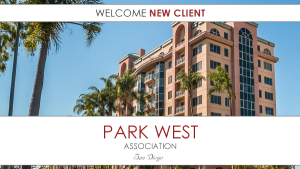 It’s our privilege to welcome Park West Association to Tinnelly Law Group’s growing family of HOA clients.
It’s our privilege to welcome Park West Association to Tinnelly Law Group’s growing family of HOA clients. HOA Lawyer Blog
HOA Lawyer Blog


 *New Case Law
*New Case Law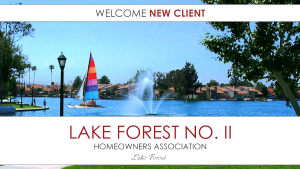 It’s our privilege to welcome Lake Forest No II Homeowners Association to Tinnelly Law Group’s growing family of HOA clients.
It’s our privilege to welcome Lake Forest No II Homeowners Association to Tinnelly Law Group’s growing family of HOA clients. One of the many benefits of living in a homeowners association (“HOA”) is the amenities provided to its residents. Common amenities include recreational rooms, pools, and fitness facilities. One amenity gaining in popularity is designated for the community’s canine companions: dog parks. Dog parks provide dogs with a designated off-leash area where they can run, exercise and play while minimizing damage to other common areas. However, having such an amenity could increase a HOA’s liability exposure, especially if the dog park is not designed properly and the HOA does not have
One of the many benefits of living in a homeowners association (“HOA”) is the amenities provided to its residents. Common amenities include recreational rooms, pools, and fitness facilities. One amenity gaining in popularity is designated for the community’s canine companions: dog parks. Dog parks provide dogs with a designated off-leash area where they can run, exercise and play while minimizing damage to other common areas. However, having such an amenity could increase a HOA’s liability exposure, especially if the dog park is not designed properly and the HOA does not have 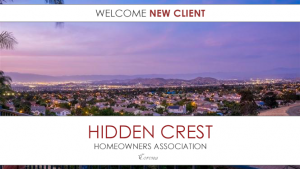 It’s our privilege to welcome Hidden Crest Homeowners Association to Tinnelly Law Group’s growing family of HOA clients.
It’s our privilege to welcome Hidden Crest Homeowners Association to Tinnelly Law Group’s growing family of HOA clients.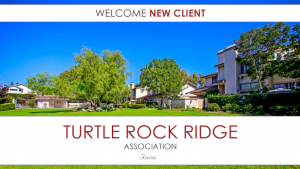 It’s our privilege to welcome Turtle Rock Ridge Association to Tinnelly Law Group’s growing family of HOA clients.
It’s our privilege to welcome Turtle Rock Ridge Association to Tinnelly Law Group’s growing family of HOA clients. *Asked and Answered
*Asked and Answered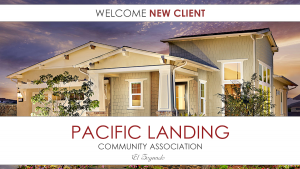 It’s our privilege to welcome Pacific Landing Community Association to Tinnelly Law Group’s growing family of HOA clients.
It’s our privilege to welcome Pacific Landing Community Association to Tinnelly Law Group’s growing family of HOA clients.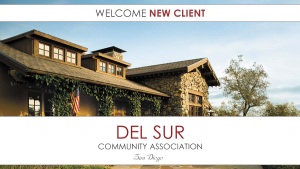 It’s our privilege to welcome Del Sur Community Association to Tinnelly Law Group’s growing family of HOA clients.
It’s our privilege to welcome Del Sur Community Association to Tinnelly Law Group’s growing family of HOA clients.